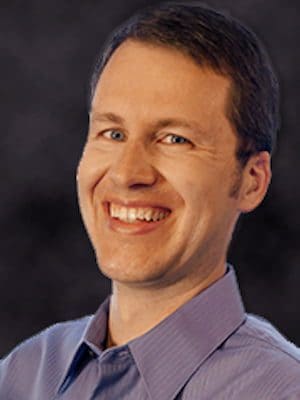Baptist preacher and civil rights leader Martin Luther King Jr. used his famous “Letter from a Birmingham Jail” to suggest that segregated worship houses serve as a barrier to true Christian worship.
Sitting in jail after being arrested for leading a nonviolent march on “Good Friday” to protest segregation in Alabama’s largest city, King responded to criticism that eight white clergymen had leveled in a newspaper statement.
Although written just four months before King’s famous “I Have a Dream” speech on the steps of the Lincoln Memorial in Washington, D.C., the strident tone of his letter sharply contrasts from his hopeful tone on the National Mall.
In the letter, King argued that “sin is separation” and therefore “segregation is not only politically, economically and sociologically unsound, it is morally wrong and sinful.”
For King, segregation (as a separation based on racial prejudice) proved society’s “awful estrangement” and “terrible sinfulness.”
King therefore praised a few of his white critics he was writing to for having finally opened up their worship spaces.
With the commendation occurring near the end of the harsh letter, King’s tone clearly established that he viewed the non-segregated worship space to be a political and religious act that transformed the nature of the worship.
Segregated worship transubstantiated the Christian message with the sin of separation.
Later in his letter, which he wrote on the edge of a used newspaper and other paper scraps to then be smuggled out for distribution, King even mockingly contrasted the messages of the elaborate segregated church structures with the gospel message he preached.
“On sweltering summer days and crisp autumn mornings I have looked at the South’s beautiful churches with their lofty spires pointing heavenward. I have beheld the impressive outlines of her massive religious education buildings,” King wrote.
He added: “Over and over I have found myself asking: ‘What kind of people worship here? Who is their God? Where were their voices when the lips of Governor Barnett dripped with words of interposition and nullification? Where were they when Governor Wallace gave a clarion call for defiance and hatred? Where were their voices of support when bruised and weary Negro men and women decided to rise from the dark dungeons of complacency to the bright hills of creative protest?'”
King’s connecting of the church buildings to his critique of the silence of the people within may seem odd at first glance.
Yet, he quickly explained that Christians originally were persecuted for remaining true to their call “to obey God rather than man.”
Answering the criticism that his message made him an extremist, King compared himself to extremists like Paul, the biblical prophet Amos, Christian leaders like Martin Luther and John Bunyan, political leaders like Thomas Jefferson and Abraham Lincoln, and even Jesus.
King argued that white churches in the U.S. had instead become “a thermometer that recorded the ideas and principles of popular opinion.”
Calling “the contemporary church … a weak, ineffectual voice with an uncertain sound,” he argued the church had lost its religious-political power by submitting to society’s beliefs and power structures.
So how do the fancy buildings with the large steeples fit into King’s critique? He noted that the church has become a “social club” more concerned with its status than with standing up for moral truths.
Thus, he lambasted those who “have remained silent behind the anesthetizing security of stained glass windows.”
For King, the nice, clean buildings seemed to represent the problem with the churches’ unwillingness to leave the comfortable pews and get dirty protesting in the streets.
Perhaps the buildings were not just a metaphor; perhaps those spaces helped create the problem King critiqued.
While King worked in an argument about religious worship creating alternative political space, he argued that this was necessary for the church to offer an alternative political message that upset the power structures.
Although King often engaged in traditional politics by lobbying Presidents John F. Kennedy and Lyndon B. Johnson, and leading boycotts, marches and protests, he also sought non-legislative means toward building racial reconciliation.
He saw the church as the prophetic voice that inherently challenged those in positions of power.
Noting the way the church used to operate with their unique religious-political message, King argued, “Whenever the early Christians entered a town, the people in power became disturbed and immediately sought to convict the Christians for being ‘disturbers of the peace’ and ‘outside agitators.'”
By 1963, however, King thought Southern white churches had lost that alternative political voice: “Far from being disturbed by the presence of the church, the power structure of the average community is consoled by the church’s silent – and often even vocal – sanction of things as they are.”
Even beyond issues of space, King believed the church inherently functioned as an alternative political force, thus he grew frustrated sitting in jail as white moderate clergy refused to deliver that message.
 Brian Kaylor is a contributing editor for EthicsDaily.com. You can follow him on Twitter @BrianKaylor.
Brian Kaylor is a contributing editor for EthicsDaily.com. You can follow him on Twitter @BrianKaylor.
Editor’s note: This article is a revised excerpt from Kaylor’s newly released book, “Sacramental Politics: Religious Worship as Political Action.” It is available for purchase here.

